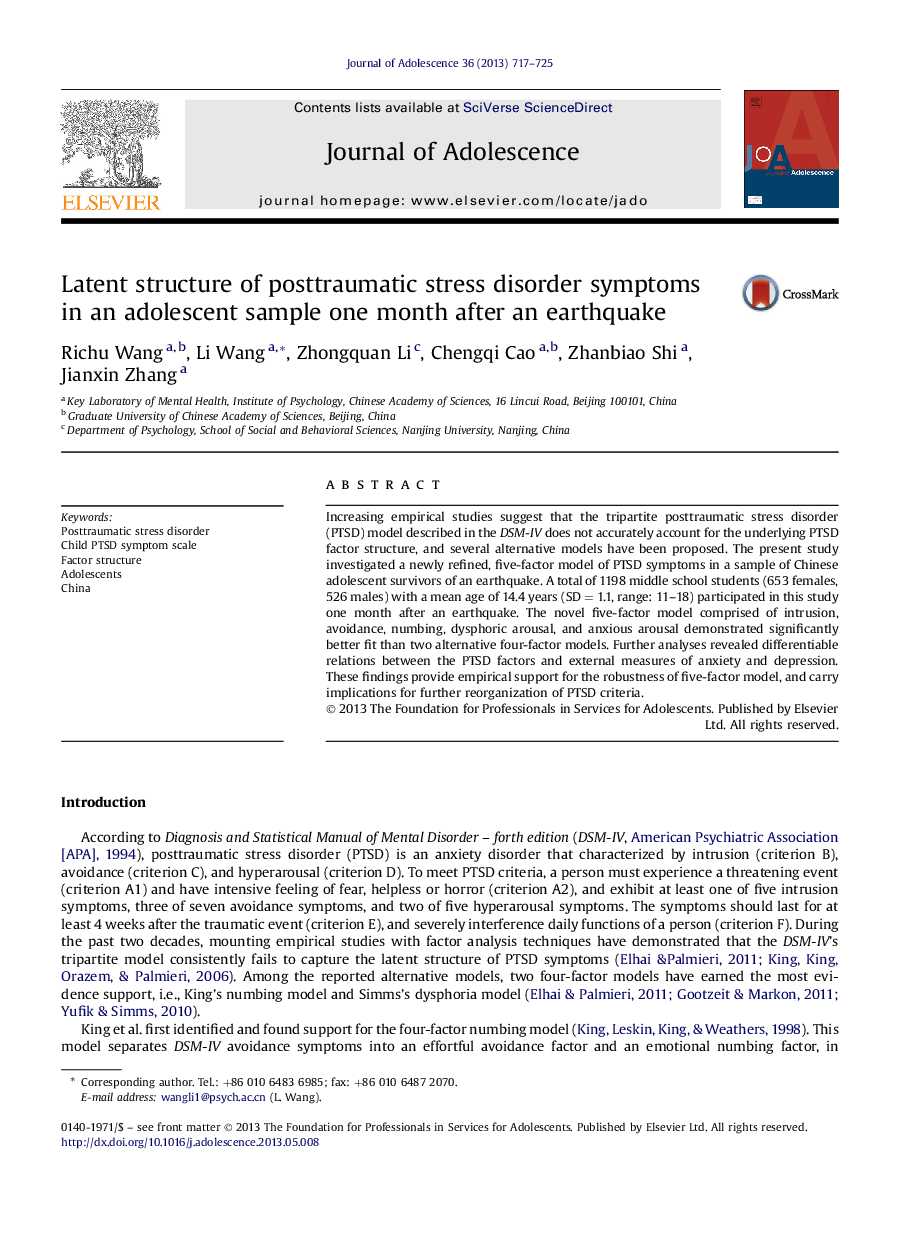| Article ID | Journal | Published Year | Pages | File Type |
|---|---|---|---|---|
| 880964 | Journal of Adolescence | 2013 | 9 Pages |
•A 5-factor PTSD model fit significantly than two well-supported 4-factor models.•Intrusion, avoidance and anxious arousal factors showed higher correlation with anxiety than depression.•Numbing factor showed higher correlations with depression than anxiety.•Dysphoric arousal factor showed no difference in correlation with depression and anxiety.
Increasing empirical studies suggest that the tripartite posttraumatic stress disorder (PTSD) model described in the DSM-IV does not accurately account for the underlying PTSD factor structure, and several alternative models have been proposed. The present study investigated a newly refined, five-factor model of PTSD symptoms in a sample of Chinese adolescent survivors of an earthquake. A total of 1198 middle school students (653 females, 526 males) with a mean age of 14.4 years (SD = 1.1, range: 11–18) participated in this study one month after an earthquake. The novel five-factor model comprised of intrusion, avoidance, numbing, dysphoric arousal, and anxious arousal demonstrated significantly better fit than two alternative four-factor models. Further analyses revealed differentiable relations between the PTSD factors and external measures of anxiety and depression. These findings provide empirical support for the robustness of five-factor model, and carry implications for further reorganization of PTSD criteria.
